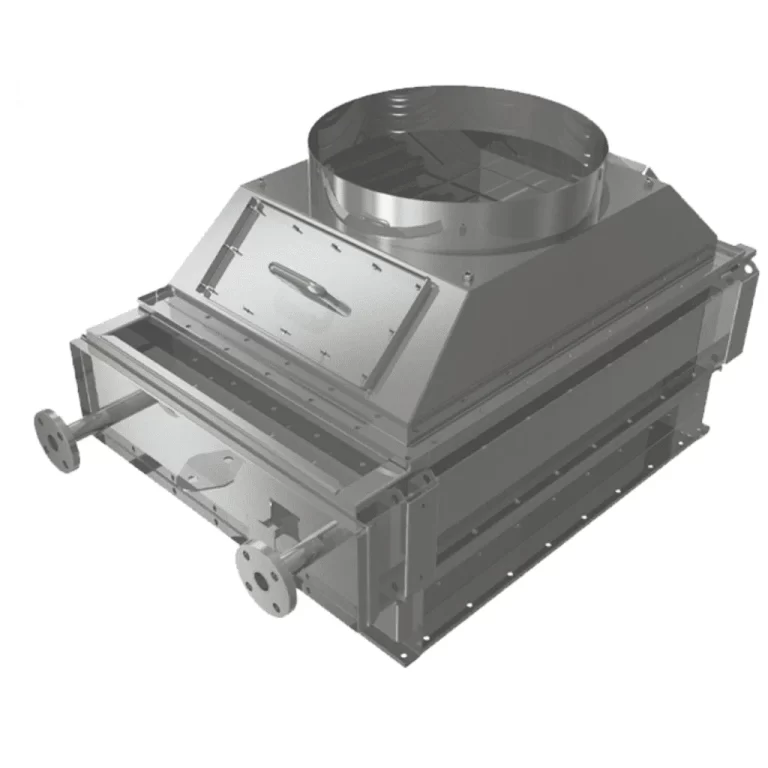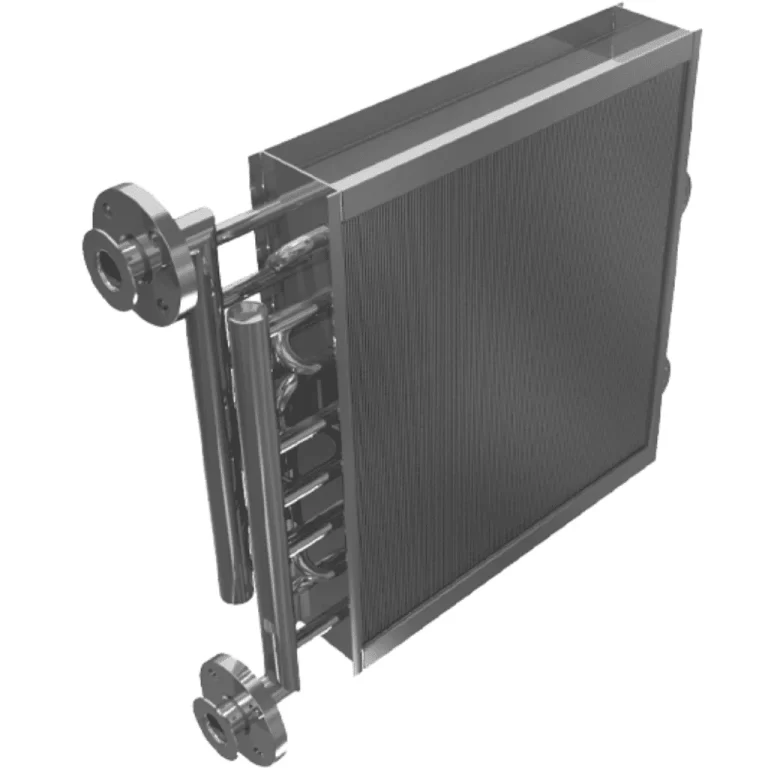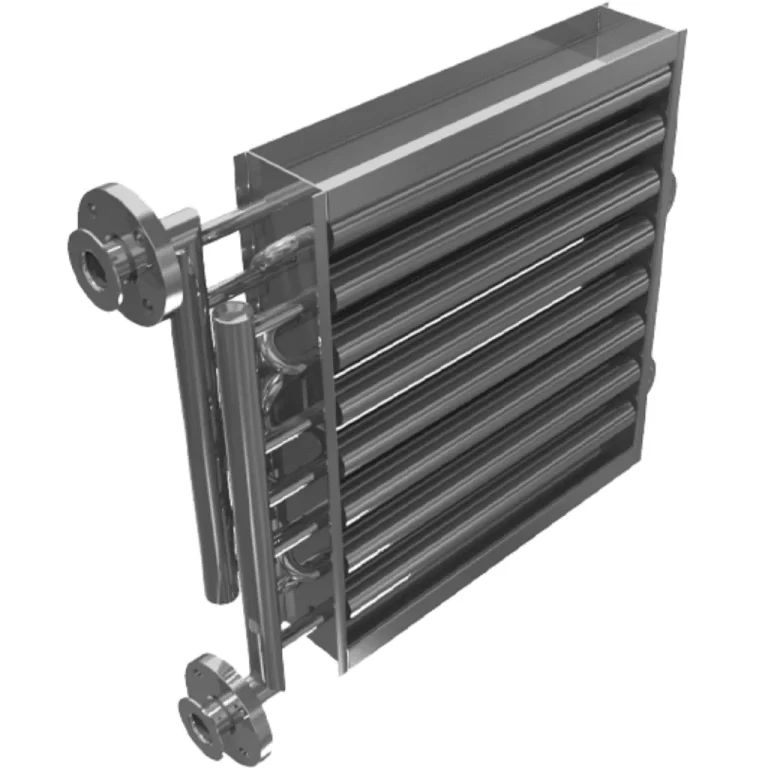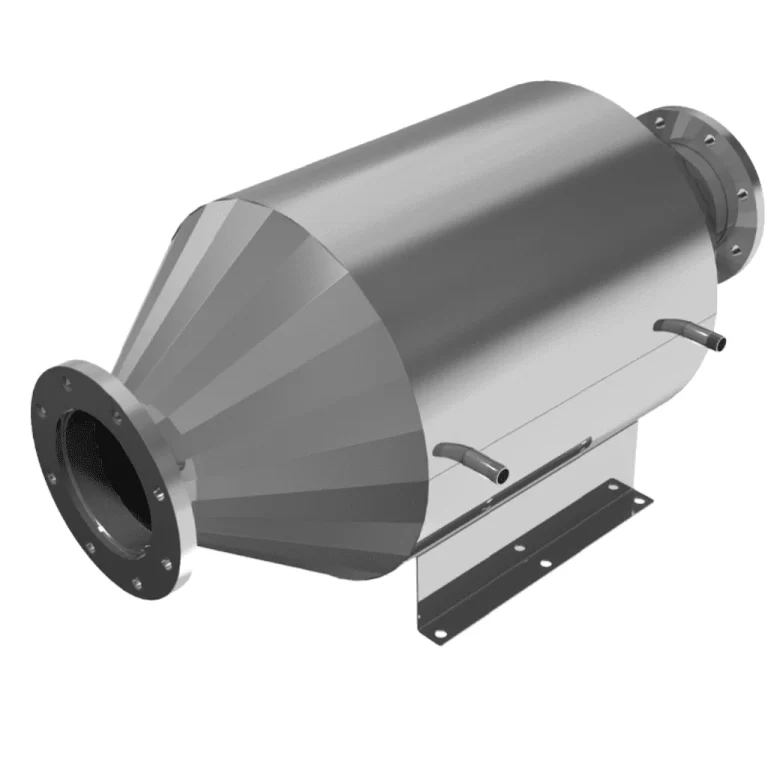GAS-LIQUID HEAT EXCHANGER
The gas-liquid heat exchanger refers to the family of heat exchangers that transfer energy between two mediums, one gaseous and the other liquid. It is a versatile equipment that can function as a steam heat exchanger, superheated water heat exchanger, or thermal oil heat exchanger, among others.
In this sense, and due to its versatility, gas-liquid exchangers can be found in most industries such as food, pharmaceutical, naval, paper, petrochemical, textile, or chemical, as they are an essential part of air treatment, water treatment, cooling, and heat recovery processes.
Heat exchangers are designed according to the sector, application, and characteristics of the fluids used, including density, sedimentation, or viscosity. It is also necessary to consider other factors such as fouling coefficients typical of most factories, which will imply that fluids contain particles resulting from lime, cellulose, fiber, or pulp.
Superheated water exchanger, steam echanger and themal oil exchanger are just some examples, but we can find many other special fluids listed below. We can classify exchangers into 3 large groups based on:
The type of fluid
Water
Fluvial water | River
Water and glycol | Glycolate
Sea water | Salty
Overheated water
Condensates
Garracid
Extraction gas | Exhaust gas
Thermal oil
Refrigerant
Therminol
Flash steam
Live steam
The application
Dryer
Industrial boiler
Air conditioning | HVAC
Cogeneration | Trigeneration
Industrial kitchen
Dehumidifier
Industrial oven
Air preheating | Economizer
Heat recovery
Painting rooms
The construction
Continuous fins
Helical fins (spiral fins)
Pillow plate
Smooth tubes | Flat tubes (no fins)
We will often find these gas-liquid heat exchangers installed inside other equipment such as terminal units, air treatment units (UTAs), coolers and heat pumps, roof-tops, autonomous units, split units, dehumidifiers, etc. but our specialization goes a step beyond air conditioning for comfort and focuses on demanding projects, mainly in industrial heat recovery needs that can reach more than 950ºC. Manufactured with materials such as steel carbon, stainless steel, refractory stainless steel, cupronickel or titanium.
These same gas-liquid exchangers can be found with a wide variety of accessories such as fans, resistors, automatic sanitization systems, inspection and control openings, air-tight structures and anti-corrosion treatments such as Blygold or Heresite.
Heat recovery
unit
Industrial
heat exchanger coils




